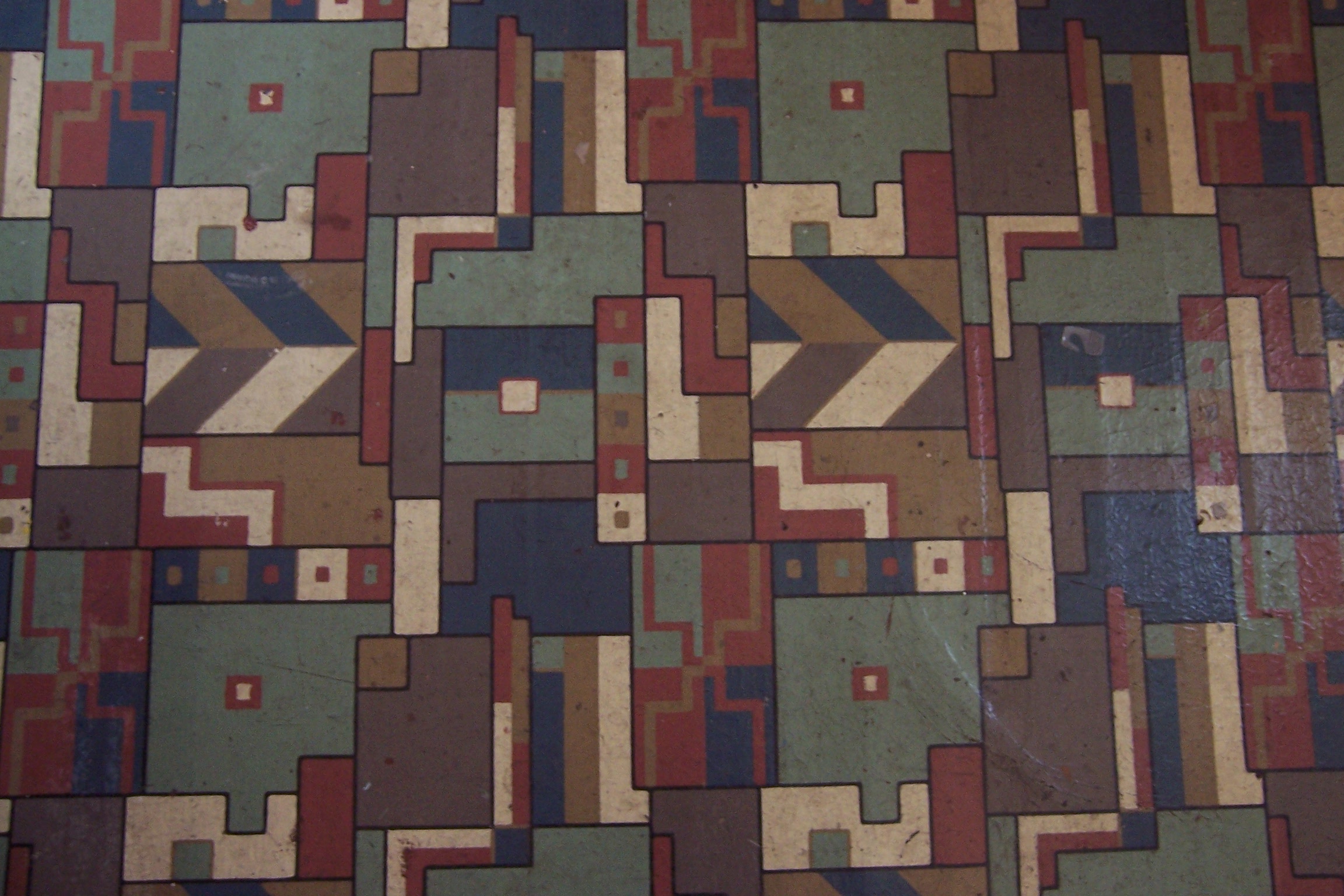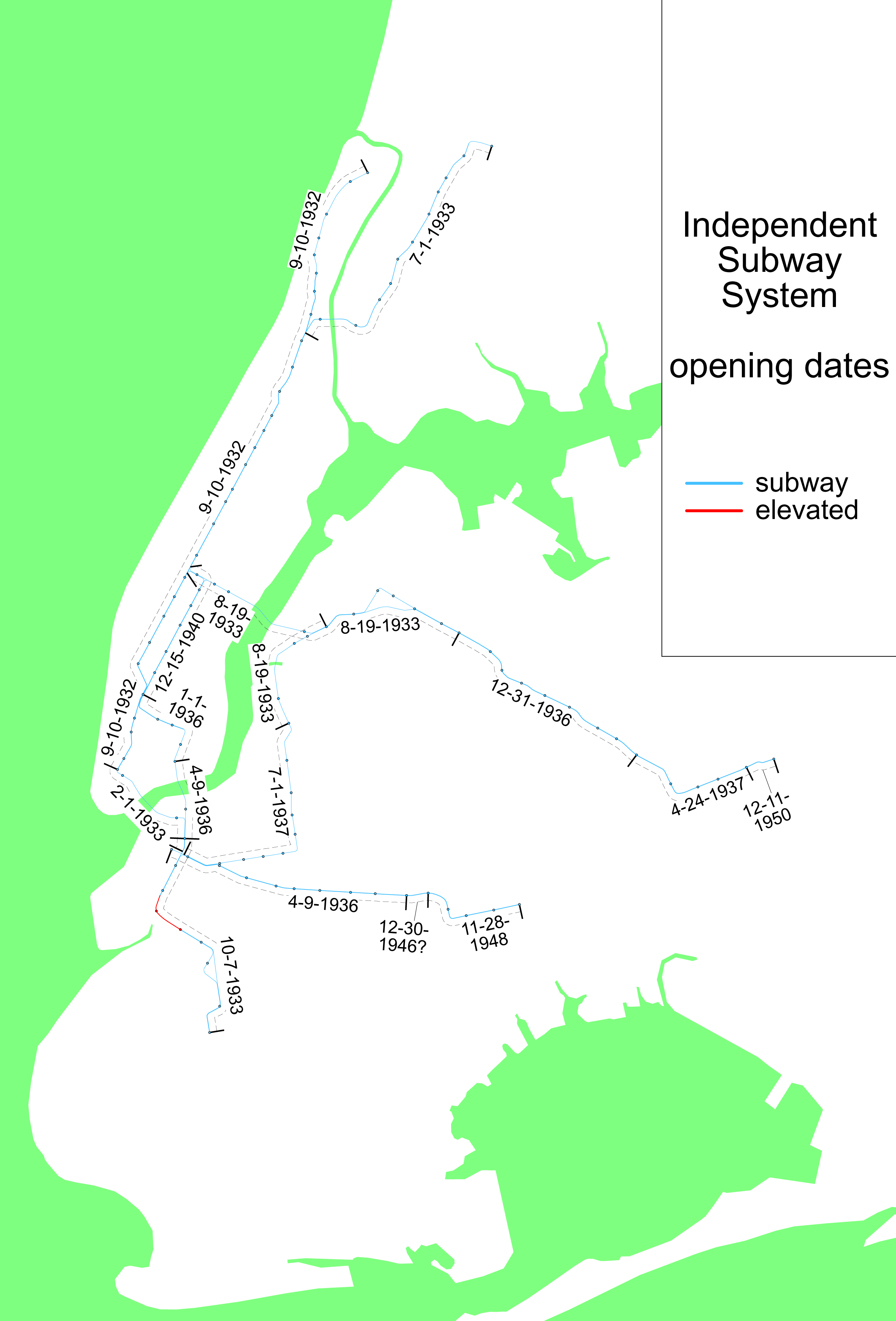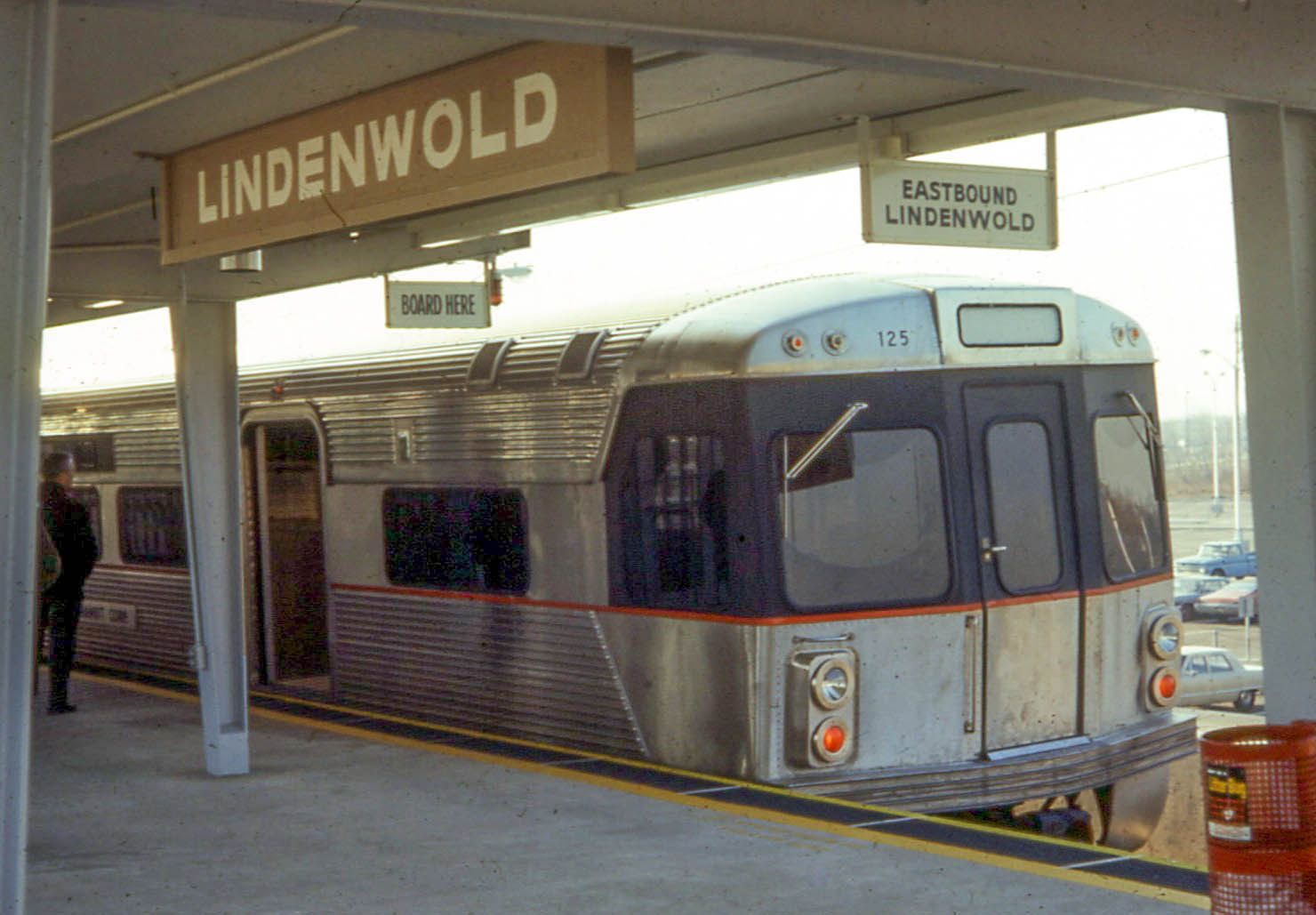|
R110B (New York City Subway Car)
The R110B (contract order R131) was a prototype class of experimental New Technology Train (NTT) New York City Subway cars built by Bombardier of Canada for service on the B Division services. There were nine cars, arranged as three-car sets. They were designed to test features that would be implemented on future mass-production NTT orders. First announced in 1989, the R110Bs were delivered in 1992 and entered service on June 15, 1993, on the service. An explosion in 1996 forced three cars to be taken out of service, resulting in the remaining six cars to run on the service. The six cars not affected by the explosion continued to run until 2000, when they were permanently removed from service due to frequent breakdowns and low Mean Distance Between Failure (MDBF) numbers. Five of the nine cars were sent away to various facilities, with the remaining four still on MTA property. Description The R110B cars were ordered from Bombardier in December 1989. The R110B was designed ... [...More Info...] [...Related Items...] OR: [Wikipedia] [Google] [Baidu] |
207th Street Yard
The New York City Transit Authority operates a total of 24 rail yards for the New York City Subway system, and one for the Staten Island Railway. There are 10 active A Division yards and 11 active B Division yards, two of which are shared between divisions for storage and car washing. In addition, there is one yard for the Staten Island Railway and three non-revenue (Maintenance of Way, or MoW) Division-independent yards. Many of the system's yards are used for off-peak storage, whereas some have inspection facilities where basic routine maintenance is carried out. Of these yards, rolling stock are assigned to seven A Division yards and seven B Division yards. Within the yards are 14 maintenance facilities, whereas two yards (207th Street and Coney Island) perform major overhaul and car rebuilding work. A Division yards The A Division's yards consist of the 239th Street, 240th Street, Corona, East 180th Street, Jerome, Livonia, and Westchester maintenance yards, plus three oth ... [...More Info...] [...Related Items...] OR: [Wikipedia] [Google] [Baidu] |
AB Standard (New York City Subway Car)
The AB Standard was a New York City Subway car class built by the American Car and Foundry Company and Pressed Steel Car Company between 1914 and 1924. It ran under the operation of the Brooklyn Rapid Transit Company (BRT) and its successors, which included the Brooklyn–Manhattan Transit Corporation (BMT), the New York City Board of Transportation, and the New York City Transit Authority (NYCTA). The cars were designed following the signing of the Dual Contracts, which called for a major expansion of the BRT. A total of 950 cars were built. In their earliest days of service, operating crews frequently called them Steels to distinguish them from the wooden BU elevated cars. However, these cars were most commonly referred to as BRT Standards, BMT Standards, or simply Standards. Train crews and the car shop departments often referred to them as 67-foot cars, AB-types, or most frequently ABs. For their time, the cars introduced a significant number of improvements to urban rapid tr ... [...More Info...] [...Related Items...] OR: [Wikipedia] [Google] [Baidu] |
Linoleum
Linoleum, sometimes shortened to lino, is a floor covering made from materials such as solidified linseed oil (linoxyn), Pine Resin, pine resin, ground Cork (material), cork dust, sawdust, and mineral fillers such as calcium carbonate, most commonly on a burlap or canvas backing. Pigments are often added to the materials to create the desired colour finish. Commercially, the material has been largely replaced by sheet vinyl flooring, although in the UK this is often still referred to as lino. The finest linoleum floors, known as "inlaid", are extremely durable, and are made by joining and inlaying solid pieces of linoleum. Cheaper patterned linoleum comes in different grades or gauges, and is printed with thinner layers which are more prone to wear and tear. High-quality linoleum is flexible and thus can be used in buildings where a more rigid material (such as Tile#Floor tiles, ceramic tile) would crack. History Linoleum was invented by Englishman Frederick Walton. In 1855, ... [...More Info...] [...Related Items...] OR: [Wikipedia] [Google] [Baidu] |
Plastic
Plastics are a wide range of synthetic or semi-synthetic materials that use polymers as a main ingredient. Their plasticity makes it possible for plastics to be moulded, extruded or pressed into solid objects of various shapes. This adaptability, plus a wide range of other properties, such as being lightweight, durable, flexible, and inexpensive to produce, has led to its widespread use. Plastics typically are made through human industrial systems. Most modern plastics are derived from fossil fuel-based chemicals like natural gas or petroleum; however, recent industrial methods use variants made from renewable materials, such as corn or cotton derivatives. 9.2 billion tonnes of plastic are estimated to have been made between 1950 and 2017. More than half this plastic has been produced since 2004. In 2020, 400 million tonnes of plastic were produced. If global trends on plastic demand continue, it is estimated that by 2050 annual global plastic production will reach over 1, ... [...More Info...] [...Related Items...] OR: [Wikipedia] [Google] [Baidu] |
Fiberglass
Fiberglass (American English) or fibreglass (Commonwealth English) is a common type of fiber-reinforced plastic using glass fiber. The fibers may be randomly arranged, flattened into a sheet called a chopped strand mat, or woven into glass cloth. The plastic matrix may be a thermoset polymer matrix—most often based on thermosetting polymers such as epoxy, polyester resin, or vinyl ester resin—or a thermoplastic. Cheaper and more flexible than carbon fiber, it is stronger than many metals by weight, non- magnetic, non-conductive, transparent to electromagnetic radiation, can be molded into complex shapes, and is chemically inert under many circumstances. Applications include aircraft, boats, automobiles, bath tubs and enclosures, swimming pools, hot tubs, septic tanks, water tanks, roofing, pipes, cladding, orthopedic casts, surfboards, and external door skins. Other common names for fiberglass are glass-reinforced plastic (GRP), glass-fiber reinforced plastic (GFRP) or GF ... [...More Info...] [...Related Items...] OR: [Wikipedia] [Google] [Baidu] |
Graffiti
Graffiti (plural; singular ''graffiti'' or ''graffito'', the latter rarely used except in archeology) is art that is written, painted or drawn on a wall or other surface, usually without permission and within public view. Graffiti ranges from simple written words to elaborate wall paintings, and has existed Graffito (archaeology), since ancient times, with examples dating back to ancient Egypt, ancient Greece, and the Roman Empire. Graffiti is a controversial subject. In most countries, marking or painting property without permission is considered by property owners and civic authorities as defacement and vandalism, which is a punishable crime, citing the use of graffiti by street gangs to mark territory or to serve as an indicator of gang-related activities. Graffiti has become visualized as a growing urban "problem" for many cities in industrialized nations, spreading from the New York City Subway nomenclature, New York City subway system and Philadelphia in the early 1970s to ... [...More Info...] [...Related Items...] OR: [Wikipedia] [Google] [Baidu] |
Lexan
Polycarbonates (PC) are a group of thermoplastic polymers containing carbonate groups in their chemical structures. Polycarbonates used in engineering are strong, tough materials, and some grades are optically transparent. They are easily worked, molded, and thermoformed. Because of these properties, polycarbonates find many applications. Polycarbonates do not have a unique resin identification code (RIC) and are identified as "Other", 7 on the RIC list. Products made from polycarbonate can contain the precursor monomer bisphenol A (BPA). Structure Carbonate esters have planar OC(OC)2 cores, which confers rigidity. The unique O=C bond is short (1.173 Å in the depicted example), while the C-O bonds are more ether-like (the bond distances of 1.326 Å for the example depicted). Polycarbonates received their name because they are polymers containing carbonate groups (−O−(C=O)−O−). A balance of useful features, including temperature resistance, impact resistance and op ... [...More Info...] [...Related Items...] OR: [Wikipedia] [Google] [Baidu] |
Independent Subway System
The Independent Subway System (IND or ISS), formerly known as the Independent City-Owned Subway System (ICOSS) or the Independent City-Owned Rapid Transit Railroad (ICORTR), was a rapid transit rail system in New York City that is now part of the New York City Subway. It was first constructed as the Eighth Avenue Line in Manhattan in 1932. One of three rail networks that became part of the modern New York City subway, the IND was intended to be fully owned and operated by the municipal government, in contrast to the privately operated or jointly funded Interborough Rapid Transit Company (IRT) and Brooklyn–Manhattan Transit Corporation (BMT) companies. It was merged with these two networks in 1940. The original IND service lines are the modern subway's A, B, C, D, E, F, and G services. In addition, the BMT's M, N, Q and R now run partly on IND trackage. The Rockaway Park Shuttle supplements the A service. For operational purposes, the IND and BMT lines and service ... [...More Info...] [...Related Items...] OR: [Wikipedia] [Google] [Baidu] |
Brooklyn–Manhattan Transit Corporation
The Brooklyn–Manhattan Transit Corporation (BMT) was an urban transit holding company, based in Brooklyn, New York City, United States, and incorporated in 1923. The system was sold to the city in 1940. Today, together with the IND subway system, it forms the B Division of the modern New York City Subway. The original BMT routes currently form the , , , , , and trains, as well as the Franklin Avenue Shuttle, with the IND , , and using BMT trackage in Brooklyn. The train enters the IND via the Chrystie Street Connection after crossing the Williamsburg Bridge, the , along with some rush-hour trains enter the IND from the BMT 63rd Street Line and the train enters the IND via the 60th Street Tunnel Connection. The train supplements the in the peak direction during rush hours only. Prior to city ownership, the BMT services were designed with numbers, and the current letter scheme was developed as a continuation of the IND nomenclature as the IND and BMT systems were in ... [...More Info...] [...Related Items...] OR: [Wikipedia] [Google] [Baidu] |
R68 (New York City Subway Car)
The R68 is a B Division (New York City Subway), B Division New York City Subway railcar, car order consisting of 425 cars built by the Westinghouse-Amrail Company (aka Francorail), a joint venture of Westinghouse Electric (1886), Westinghouse, ANF Industrie, Jeumont Schneider, and Alstom, Alsthom. The cars were built in France from 1986 to 1988 and shipped through New York Harbor. Of the cars in the fleet, 416 are arranged in four-car sets while the other nine are single cars. The R68 was the third R-type contract to be built with cars (the previous two being the R44 (New York City Subway car), R44 and R46 (New York City Subway car), R46). The first R68 train entered service on June 20, 1986. The R68's manufacturers suffered from significant system integration problems, and the fleet became known as a "Lemon (automobile), lemon" in its early years, but its performance was improved following modifications by the New York City Transit Authority. In the 2010s, a small number of R68s ... [...More Info...] [...Related Items...] OR: [Wikipedia] [Google] [Baidu] |
Cathode Ray Tube
A cathode-ray tube (CRT) is a vacuum tube containing one or more electron guns, which emit electron beams that are manipulated to display images on a phosphorescent screen. The images may represent electrical waveforms ( oscilloscope), pictures (television set, computer monitor), radar targets, or other phenomena. A CRT on a television set is commonly called a picture tube. CRTs have also been used as memory devices, in which case the screen is not intended to be visible to an observer. The term ''cathode ray'' was used to describe electron beams when they were first discovered, before it was understood that what was emitted from the cathode was a beam of electrons. In CRT television sets and computer monitors, the entire front area of the tube is scanned repeatedly and systematically in a fixed pattern called a raster. In color devices, an image is produced by controlling the intensity of each of three electron beams, one for each additive primary color (red, green, and bl ... [...More Info...] [...Related Items...] OR: [Wikipedia] [Google] [Baidu] |
PATCO Speedline
The PATCO Speedline (signed in Philadelphia as the Lindenwold Line and also known colloquially as the PATCO High Speed Line) is a rapid transit route operated by the Port Authority Transit Corporation (PATCO), which runs between Philadelphia, Pennsylvania and Camden County, New Jersey. The line runs underground in Philadelphia, crosses the Delaware River on the Benjamin Franklin Bridge, runs underground in Camden, then runs above ground to the east end of the line in Lindenwold, New Jersey. The Port Authority Transit Corporation and the Speedline are owned and operated by the Delaware River Port Authority. The line opened between Lindenwold and Camden on January 4, 1969 with the full line to Philadelphia opening a few weeks later on February 15, 1969. The PATCO Speedline operates 24 hours a day, one of only a few U.S. mass transit systems to do so. In , the line saw rides, or about per weekday in . History Philadelphia to Camden The modern-day PATCO Speedline follow ... [...More Info...] [...Related Items...] OR: [Wikipedia] [Google] [Baidu] |





